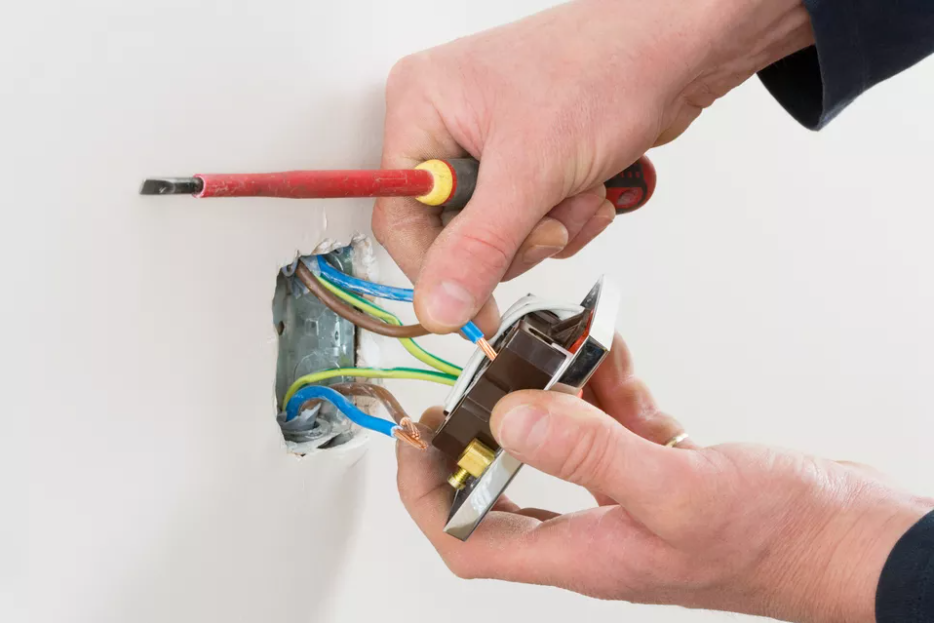The electricity system is directly related to the daily activities of the household that not only affects the quality of life but also the safety of each member. Technical knowledge of electricity, despite being boring, can be applied directly in daily life. Therefore, everyone should equip themselves with these bits of knowledge, first of all, the identification of household electrical wires.

Everyone should equip themselves with the basic knowledge of electricity
Benefits of knowing different types of electrical wiring in the household
No one can predict the electrical risks, therefore, to help prevent these incidents, the best thing that should be done is to equip ourselves with the basic knowledge about the appropriate types of electrical wires for the house. This knowledge will help you ensure safety in use. Moreover, it can also help to initiatively install, repair, or at least reduce the cost of repair and replacement during usage. As when you understand the problem, you will find it easier to solve.
Types of household wires
Based on the purpose of use, household wires can be classified into 3 types as follows:
- Wires from the power lines to the house
- Wires from the house to the galvanometer
- Wires conduct electricity to household electrical appliances

Household wires can be classified into 3 types
Wires from the power lines to the house
This is an outdoor installation, connecting the local total power grid to the house. In some places, cables can be equipped underground. This type of wire is mainly located outdoors so it must withstand a large amount of capacity. Normally, the wires in the outside of the house will be used twisted copper cable - Duplex copper conductor PVC or XLPE insulated. However, this line will usually be granted by the local electricity company if you register to open a new meter.
Commonly used wires:
|
Type of wire
|
Characteristics
|
Structure
|
Voltage level
|
|
Duplex Du-CV cable
|
Copper conductor (Cu)
PVC insulation
|
Du-CV Duplex cable has two copper conductors (1 thick copper strand or multi strands twisted together). Each conductor will again be covered with PVC insulation and then twisted together
|
450 / 750V or 0.6 / 1KV
|
|
Du-CX Duplex cable
|
Copper conductor (Cu)
XLPE Insulation
|
Du-CX Duplex cable has two copper conductors (1 thick copper strand or multi strands twisted together). Each conductor will again be insulated with XLPE insulation and then twisted together (one of the two conductors is ribbed to help distinguish the phase)
|
0,6/1KV
|
Wires from the house to the galvanometer
The electric conductor from the house to the galvanometer is connected from the end of the outdoor power lines mentioned to the galvanometer (power consumption meter). The galvanometer can be placed indoors, therefore, the lead from the home to the galvanometer is usually placed half along the wall, half indoors.
Commonly used wires:
|
Type of wire
|
Characteristics
|
Structure
|
Voltage level
|
|
DK-CVV cable
(also known as copper conductor muller cable PVC insulate)
|
Copper conductor (Cu)
PVC insulation
|
DK-CVV cable has two or more conductors (1 thick copper strand or multi strands twisted together). Each conductor will again be insulated with PVC material, PVC liner, aluminum tape (anti-theft), finally a protective PVC sheath
|
450/750V or 0,6/1KV
|
|
DK-CXV cable
|
Copper conductor (Cu)
XLPE Insulation
|
DK-CXV cable has two or more conductors (1 thick copper strand or multi strands twisted together). Each conductor will be insulated again with XLPE material which is naturally white in color, PVC lining, aluminum tape (anti-theft), finally a PVC sheath.
NB: One of the two conductors will be colored stripes/color bands to distinguish the phase
|
0,6/1KV
|
Wires conduct electricity to household electrical appliances
If the mentioned types of wires are quite difficult to buy, the power cord to the home electric appliances is very easy to find at any dealer. With this type of wire, most homeowners can buy and decide. Normally, for civil wires, we often use the following types:
|
Type of wire
|
Characteristics
|
Voltage level
|
|
Single wire
|
|
Single hard wire VC
|
The core has 1 copper conductor
PVC insulation
|
450/750V
|
|
Single hardwire VA
|
The conductor has 1 aluminum strands
PVC insulation
|
450/750V
|
|
Single soft wire VCm
|
Conductors have many copper strands twisted together
PVC insulation
|
450/750V
|
|
Double wire
|
|
Flat double-stranded wire VCmd
|
Conductors have many copper strands twisted together
PVC insulation
The insulation of the two intestinal sections is joined together to form a flat wire
|
300/500V
|
|
Twisted pair flexible wire VCmx
|
A type of wire twisted from two stranded soft double strands VCmd
|
300/500V
|
|
Twisted-pair soft wire VCmt
|
This type of wire is made of two soft single strands VCm twisted together or paralleled to each other, and insulated with PVC
|
300/500V
|
|
Oval soft double wire VCmo
|
This type of wire is made of two soft single strands VCm twisted together or paralleled to each other, insulated with PVC
|
300/500V
|

Currently, Tran Phu Electric Mechanical is the first choice of electric cables for housing projects. Tran Phu's products are not only diverse in types that meet most of the needs of households, but also ensure the standards of Good Conductivity - Safety - Saving electricity. With quality products, dedicated customer service, and satisfactory warranty policy, customers can be assured of choosing Tran Phu brand for the electrical system in the home.
CONTACT INFORMATION:
Tran Phu Electric Mechanical Joint Stock Company
Address: No. 41, Phuong Liet Str., Phuong Liet Ward, Thanh Xuan Dist., Hanoi.
Hotline: 0898.41.41.41
Email: contact@tranphu.vn
Website: www.tranphu.com.vn